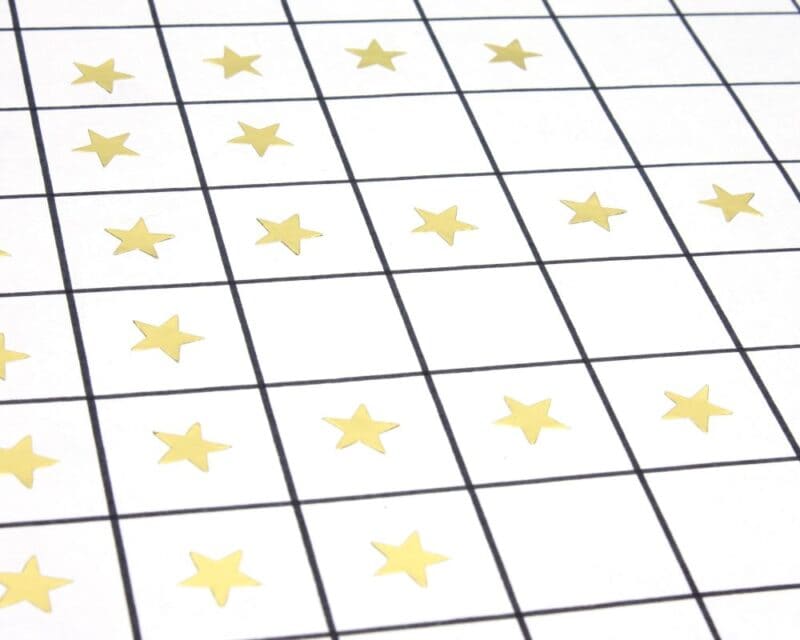In today’s dynamic parenting landscape, fostering positive behavior in children stands as a cornerstone of effective upbringing. Positive reinforcement, widely regarded as a fundamental aspect of behavior modification, entails acknowledging and rewarding specific behaviors to encourage their continuation. This practice not only celebrates achievements but also instills a sense of pride and accomplishment in children, motivating them to strive for excellence.
By focusing on the positive aspects of a child’s behavior, parents can create a nurturing environment that promotes self-confidence and emotional well-being. Rather than solely addressing negative actions, highlighting and rewarding good behavior serves as a powerful motivator for children of all ages. Whether it’s praising a younger child for completing daily chores or acknowledging an older child’s hard work in school, positive reinforcement reinforces the value of their efforts and encourages them to continue making positive choices.

Furthermore, implementing an effective reward system can significantly contribute to the cultivation of positive behavior. By offering incentives such as a new toy or the opportunity to learn a new skill, parents can inspire their children to set and achieve goals. This approach not only fosters a sense of responsibility and accountability but also encourages children to develop important life skills such as perseverance and determination.
In essence, by emphasizing and rewarding good behavior, parents can create a supportive and encouraging environment that empowers children to reach their full potential. Through a combination of positive reinforcement, effective reward systems, and nurturing guidance, parents can instill valuable qualities in their children and set them on the path towards success.
Understanding Positive Reinforcement
In the realm of effective behavior modification, positive reinforcement stands out as a pivotal strategy. It involves acknowledging and rewarding specific behaviors that align with desired outcomes, serving as a catalyst for their continuation. Instead of solely emphasizing the correction of negative behaviors, positive reinforcement shifts the focus towards acknowledging and celebrating moments of success and progress.
This approach offers a powerful tool for parents, especially when nurturing the development of younger children. By consistently recognizing and rewarding instances of good behavior, parents establish a supportive environment that encourages positive actions. This not only reinforces the value of positive conduct but also serves as a powerful motivator for young kids to continue making good choices.
Moreover, positive reinforcement acts as a bridge between parents and older children, fostering open communication and mutual respect. By acknowledging their efforts and achievements, parents affirm their older children’s autonomy and responsibility. This recognition serves as a source of encouragement, motivating them to maintain their positive behavior and strive for further success.
The Power of Tangible Rewards

Utilizing tangible rewards is not just a good idea; it’s a great way to reinforce positive behavior in children of all ages. Whether it’s sticker charts, chore charts, or a treasure box filled with small prizes, these tangible symbols of achievement can go a long way in encouraging good behavior.
For younger children, sticker charts can be particularly effective. Each sticker earned for specific behaviors or tasks completed serves as a visual representation of their progress, making the process of achieving goals feel more tangible and rewarding. Similarly, chore charts provide a clear outline of responsibilities and rewards, instilling a sense of accountability and accomplishment in young children.
Even for older kids, tangible rewards remain a great motivator. Whether it’s earning points towards a bigger reward or selecting a prize from a treasure box, these tangible incentives serve as constant reminders of their achievements. They not only reinforce good behavior but also encourage older kids to stay on track with their goals and responsibilities.
Incorporating Quality Time
Incorporating quality time into your parenting approach is not just a great idea; it’s one of the best ways to reinforce positive behavior in children of all ages. Quality time spent together serves as a powerful reward for good behavior, fostering a sense of connection and belonging within the family unit.
For little kids, simple activities like reading a book together or baking cookies can be incredibly rewarding. These moments of shared joy and laughter not only reinforce good behavior but also create cherished memories that they will carry with them for a lifetime.
Similarly, older kids benefit greatly from quality time spent with family. Whether it’s playing board games, going for a hike, or having a heartfelt conversation, these experiences help strengthen the bond between parent and child. They also provide opportunities for open communication and support, making it easier for older kids to navigate challenges and make positive choices.
In today’s fast-paced world, finding time to spend together as a family can be challenging, but it’s well worth the effort. By prioritizing quality time and making it a regular part of your routine, you not only reward good behavior but also create a strong foundation for a happy and healthy family life. So, the next time your child does something deserving of praise, consider treating them to a fun activity or special outing. It’s not just a reward for them; it’s an investment in your family’s happiness and well-being.
Tailoring Rewards to Age and Interest

Tailoring rewards to your child’s age and interests is crucial for maintaining their motivation and engagement. For younger children, simple yet enticing incentives like extra screen time or a special treat such as ice cream can work wonders in reinforcing positive behavior. These immediate rewards resonate well with their developmental stage and serve as effective motivators for them to continue exhibiting good behavior.
On the other hand, older children often require more sophisticated rewards that align with their evolving interests and desires. Privileges like the opportunity to choose a new video game or enjoying a later bedtime can be highly appealing to them. These rewards not only acknowledge their maturity but also provide meaningful incentives for them to consistently demonstrate positive behavior.
When establishing a reward system, it’s essential to consider the specific behaviors you want to reinforce and tailor the rewards accordingly. Whether it’s completing chores without reminders or consistently demonstrating kindness towards siblings, rewards should be directly linked to the desired behaviors to maximize their effectiveness.
Moreover, involving children in setting family goals can further enhance the effectiveness of the reward system. By collaboratively working towards shared objectives, children feel a sense of ownership and responsibility, making them more motivated to achieve the desired outcomes.
Ultimately, the key to a successful reward system lies in its flexibility and adaptability. As children grow and their interests evolve, it’s important to reassess and adjust the rewards to ensure continued motivation and engagement. By consistently reinforcing good behavior with appropriate rewards, parents can nurture a positive environment where children thrive and flourish.
Building Intrinsic Motivation
Building intrinsic motivation in children is essential for long-term behavior change and personal growth. While external rewards like praise and tangible incentives can be effective in the short term, instilling a sense of intrinsic motivation empowers children to develop lasting habits and skills.
One effective way to foster intrinsic motivation is by encouraging children to set specific behavior goals for themselves. Rather than relying solely on external rewards, such as stickers or treats, children can learn to identify behaviors they want to improve or develop. For younger kids, this might involve setting goals related to completing chores without reminders or demonstrating kindness towards siblings. For older children, goals could be related to academic achievement, personal growth, or character development.
As children work towards these goals, it’s important to provide them with regular feedback and support. Verbal praise and encouragement are powerful tools for reinforcing positive behaviors and boosting children’s self-esteem. Additionally, involving family members in the process can provide children with a sense of accountability and support, further motivating them to stay on track.
At the end of each day or week, take time to review progress towards goals and celebrate achievements. This can be done through a behavior chart or a simple conversation where children reflect on their efforts and accomplishments. By acknowledging their hard work and perseverance, you reinforce the intrinsic value of their behavior and encourage them to continue striving for improvement.
Intrinsic motivation is not something that develops overnight, but with consistent encouragement and support, children can learn to take ownership of their behavior and develop a lifelong commitment to personal growth and success.
Avoiding Negative Reinforcement
Avoiding negative reinforcement is crucial in maintaining a positive and supportive environment for children of all ages. While it may be tempting to resort to punishment or withholding rewards when confronted with undesirable behavior, such approaches can have detrimental effects on a child’s self-esteem and motivation in the long run.
Instead of focusing on the negative behavior itself, it’s important to address the underlying factors contributing to it. This may involve identifying triggers or stressors that could be influencing the child’s behavior and implementing strategies to address them proactively. For example, if a child is acting out due to boredom or frustration, providing them with engaging activities or opportunities for self-expression can help redirect their energy in a positive direction.
Furthermore, when faced with instances of undesirable behavior, it’s essential to remain calm and composed. Reacting with anger or frustration can escalate the situation and undermine efforts to promote positive behavior. Instead, take a moment to assess the situation and respond in a firm but empathetic manner. Offer guidance and support to help the child understand the impact of their actions and identify more appropriate ways to express themselves.
In addition to addressing negative behavior in the moment, it’s crucial to focus on reinforcing positive alternatives. This can involve praising the child for demonstrating good behavior, even in small increments, and offering rewards or incentives for their efforts. By highlighting and celebrating instances of good behavior, you can help reinforce positive habits and cultivate a supportive environment where children feel valued and respected.
Overall, by avoiding negative reinforcement and focusing on positive alternatives, you can help nurture a sense of confidence, self-discipline, and respect in children of all ages. By promoting a culture of encouragement and support, you can empower children to make positive choices and thrive in all aspects of their lives.
Exploring Different Reward Systems

Exploring different reward systems can be an exciting journey that allows you to find what truly resonates with your child and family dynamics. One option to consider is a point-based system, where children earn points for demonstrating positive behaviors or completing tasks. These points can then be redeemed for rewards that they find motivating, whether it’s a special outing, a favorite treat, or extra screen time.
Another popular approach is using printable reward charts, which provide a visual representation of progress and achievements. These charts can be customized to track specific behaviors or goals and offer a tangible way for children to see their efforts paying off. Whether it’s placing stickers on a chart for each completed task or coloring in boxes to mark milestones, printable reward charts can be highly effective in reinforcing positive behaviors.
Additionally, you may want to explore reward systems that incorporate elements of gamification, such as earning badges or leveling up for achieving certain milestones. These systems tap into children’s natural desire for challenge and progression, making the process of earning rewards feel like an exciting adventure.
It’s important to remember that the most effective form of reward is one that is meaningful and tailored to your child’s individual needs and interests. Take the time to experiment with different approaches and observe how your child responds. By finding what resonates with them, you can create a reward system that not only motivates them to behave positively but also fosters a sense of empowerment and accomplishment.
Fun and Effective Reward Ideas for 10-Year-Olds
Here’s a list of fun and effective rewards for 10-year-olds:
- Board game night with the family
- Sticker chart for completing daily tasks
- Extra time to play their favorite video game
- Trip to the dollar store to pick out a small toy
- Chore chart with rewards for completing tasks
- Special outing to their favorite amusement park
- Art supplies to unleash their creativity
- Point reward system leading to a bigger reward at the end of the week
- Jump rope challenge with a reward for reaching a certain number of jumps
- Family scavenger hunt with a prize for finding all the items
- Marble jar for demonstrating good behavior, with a reward for filling it up
- New book from their favorite author
- Extra bedtime story as a special treat
- Movie night with popcorn and their favorite snacks
- Water bottles with fun designs or characters
- Family bike ride to a nearby park or trail
- Virtual scavenger hunt with friends over video call
- DIY art project with cotton balls and different colors
- Ice cream outing for achieving good grades on their report card
- Affiliate links to choose a reward from an online store they love
These rewards can serve as incentives for desired behavior, encourage positive habits, and provide enjoyable experiences for 10-year-olds.
Conclusion
In conclusion, positive reinforcement is a powerful tool for shaping children’s behavior and fostering a positive parent-child relationship. By incorporating tangible rewards, quality time, and intrinsic motivation into your parenting approach, you can create a nurturing environment where good behavior thrives. With patience, consistency, and a little creativity, you can create a reward system that motivates and inspires your child to be their best self.
